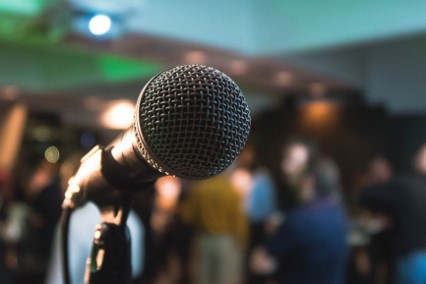
ΑΙhub.org
Science communication for AI researchers – a quick introduction: NeurIPS 2023

Welcome to the webpage for our NeurIPS 2023 introduction to science communication for AI researchers.
Would you like to learn how to communicate your AI research to a general audience? In this session you will learn how to turn your research articles into blog posts, how to use social media to promote your work, and how to avoid hype when writing about your research.
When?
Monday 11 December
12:45 – 13:45 Talk: science communication for AI researchers – introductory training
14:00 – 16:00 Open drop-in session for one-on-one support
Where?
Room 235/236 New Orleans Ernest N. Morial Convention Center.
Presenters
Professor Tom Dietterich, Oregon State University
Dr Lucy Smith, Managing Editor, AIhub
About the session
One of the challenges facing the field of AI is its portrayal in the media, which leads to misconceptions among policy makers, business leaders, and the general public alike. By communicating about AI in a clear, informed, and measured manner you can help to combat the flow of mis-information and convey the reality of today’s technology. Discover how much value science communication can add to your professional journey. You will learn to find your story and communicate it to your audience.
We will guide participants on how to quickly shape the story of their AI research. We’ll focus on how to structure this research story to form a blog post. Participants will learn how to explain their research to a general audience in a clear and concise manner. We will also touch on how to find suitable images and how to avoid hype when promoting research.
Agenda
- The importance of AI communication.
- Different ways of doing science communication.
- There are many ways to communicate your work, ranging from social media to long-form articles. We will cover a few of these. For those that do not feel comfortable communicating their work themselves, we’ll guide you on how to best reach out to science communicators who may be able to share your research story for you.
- Finding your story.
- How to produce a short summary of your research: we will take a step-by-step, guided approach to show you how to build a structured outline of your research story. This outline of the key points of a research story could be used to communicate work on a social media platform, such as Twitter.
- How to expand your outline to write a complete post: the next step is to expand the structured outline to form a complete post. We’ll give guidance, with worked examples, on how to do this.
- How to find and use suitable images.
- Articles about AI in the media tend to be accompanied by images of blue brains, white robots, and flying maths, usually completely unrelated to the content being reported. We will guide on how to source, use, and credit suitable AI images to accompany your work.
- How to avoid hype when communicating your research.
- Hype around AI sets inflated expectations about the technology, drives unnecessary fears and detracts from the meaningful discussions that need to happen now, about the technology actually being developed today. We will present some guidelines on how you can best avoid the hype when promoting your work.
- Unconventional science communication.
- Exploring different ways of doing science communication.
Course slides
The course slides are here.
Contact
If you would like to find out more, contact Lucy Smith at aihuborg[at]gmail.com.
Training videos
Together with our colleagues at Robohub, we have put together a series of bite-sized videos. These can be watched as a supplement to this session.
Why science communication matters
Different ways to do science communication
How to approach the media: An interview with Evan Ackerman (Senior Editor at IEEE Spectrum)
10 tips on: How to turn your research into a blog post
10 tips on: How to avoid hype when communicating your research







